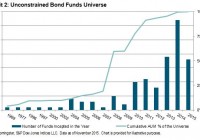S&P 500 Again Shows Weakness: Go Short With These ETFs
After the furious rally since February 12, the S&P 500 has again lost momentum and slipped into the red from a year-to-date look. This is especially true, as investors are apprehensive as to whether the stocks will be able to sustain their gains in the coming weeks given the bleak corporate earnings picture and renewed concerns on global growth uncertainty (read: Top and Flop Zones of Q1 and Their ETFs ). As we are heading into a weak Q1 earnings season, volatility is expected to increase though stabilization in energy prices and the dollar could act as a catalyst. According to the Zacks Earnings Trend , earnings growth will be deep in the negative territory for the fourth consecutive quarter with 10.9% estimated decline. In fact, the magnitude of negative Q1 revisions was the highest among recent quarters with 14 out of the 16 Zacks’ sectors witnessing negative revisions over the past three months. Utilities and retail were the only two exceptions. Revenues will likely be down 2.2% on modestly lower net margins. The release of minutes this week showed that the Fed is unlikely to raise interest rates in April, signaling that weak global growth could hurt the ongoing recovery in the U.S. economy. Further, continued rise in the Japanese currency dampened investors’ faith in central banks’ ability to boost growth across the globe. All these factors coupled with relatively higher valuations have led to risk-off trade, pushing the safe havens higher (read: Q1 ETF Asset Report: Safe Havens Pop; Currency Hedged Drop ). Added to the downbeat note is the International Monetary Fund warning. The agency stated that problems in emerging markets, such as China, could lead to poor stock performance in the U.S. and other developed countries. Given this, the S&P 500 will likely see rough trading ahead and investors could easily tap this opportune moment by going short on the index. There are a number of inverse or leveraged inverse products in the market that offer inverse (opposite) exposure to the index. Below, we highlight those and some of the key differences between each: ProShares Short S&P500 ETF (NYSEARCA: SH ) This fund provides unleveraged inverse exposure to the daily performance of the S&P 500 index. It is the most popular and liquid ETF in the inverse equity space with AUM of nearly $2.5 billion and average daily volume of nearly 7 million shares. The fund charges 90 bps in annual fees. ProShares UltraShort S&P500 ETF (NYSEARCA: SDS ) This fund seeks two times (2x) leveraged inverse exposure to the index, charging 91 bps in fees. It is also relatively popular and liquid having amassed nearly $2 billion in AUM and more than 13.5 million shares in average daily volume. ProShares Ultra S&P500 ETF (NYSEARCA: SSO ) With AUM of $1.6 billion, this fund also seeks to deliver twice the return of the S&P 500 Index, charging investors 0.89% in expense ratio. It trades in solid volumes of more than 4.6 million shares a day on average. ProShares UltraPro Short S&P500 (NYSEARCA: SPXU ) Investors having a more bearish view and higher risk appetite could find SPXU interesting as the fund provides three times (3x) inverse exposure to the index. Though the ETF charges a slightly higher fee of 93 bps per year, trading volume is solid, exchanging more than 6.6 million shares per day on average. It has amassed $728.3 million in its asset base so far. Direxion Daily S&P 500 Bear 3x Shares (NYSEARCA: SPXS ) Like SPXU, this product also provides three times inverse exposure to the index but comes with 2 bps higher fees. It trades in solid volume of about 6.6 million shares and has AUM of $476.8 million. Bottom Line As a caveat, investors should note that such products are suitable only for short-term traders as these are rebalanced on a daily basis. Still, for ETF investors who are bearish on the equity market for the near term, either of the above products could make an interesting choice. Clearly, a near-term short could be intriguing for those with high-risk tolerance, and a belief that the “trend is the friend” in this corner of the investing world. Original Post
